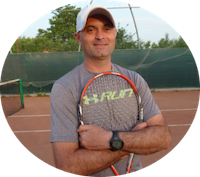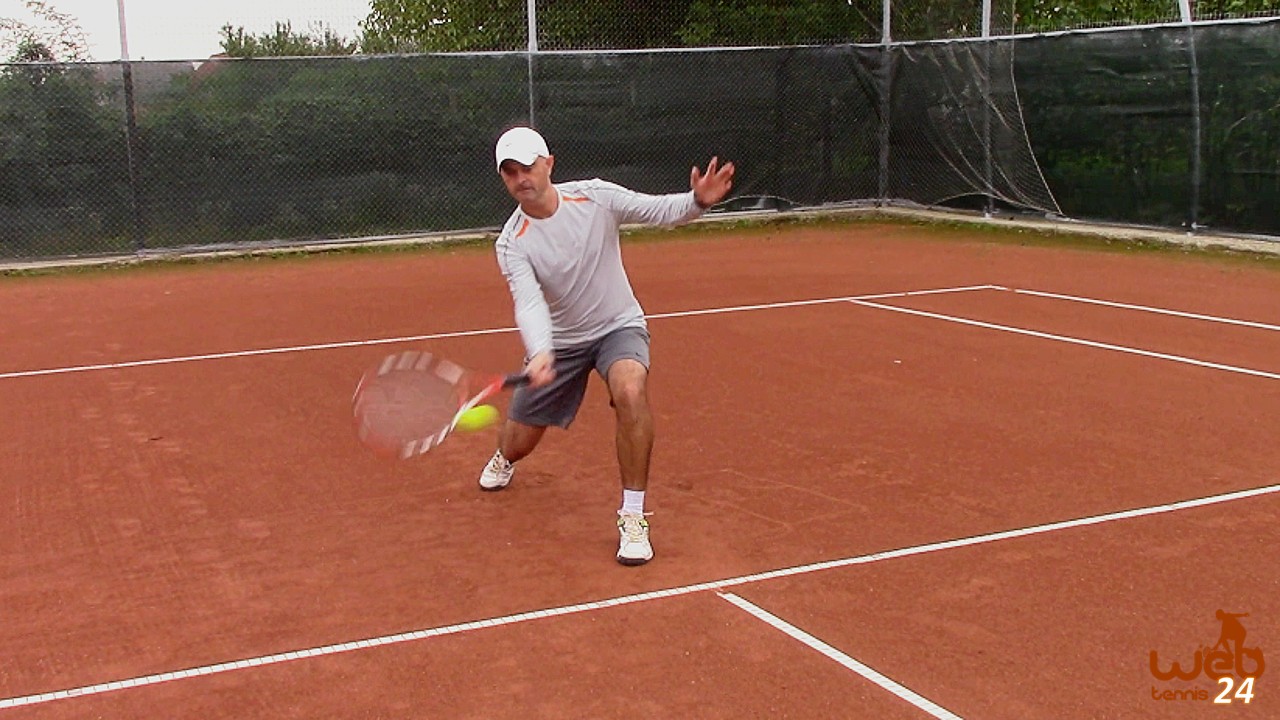The proper ball distance appears to be an ardent subject that tennis coaches want to know when teaching beginning players.
Some young players (beginners) indeed have difficulty achieving optimal contact with the ball – getting either too close or too far from it. Therefore, coaches try to find solutions to help their players hit the ball more naturally and in balance.
Unfortunately, there is no quick or easy solution to this and, if you ask me, I consider this will be fixed naturally through repetition. The only way a beginning player realizes to “feel” the optimal contact point and space to the ball is through lots of practice. Eventually, the player will develop the proper timing, hand-eye coordination, and footwork to position the body and racquet most comfortably and naturally.
But if you really want to speed up the process, I dare to suggest a couple of drills that you and your student can do to get a clear understanding of where the contact with the ball should be and improve the timing to achieve that:
1. Have your student (or partner) position in an open stance (feet parallel to the net) or square stance (feet sideways to the net) and racquet held at a “contact point” position: racquet face towards the net, proper grip, arm slightly bent. By the way, this can be applied when practicing either forehand or backhand groundstrokes.
From the “contact point” position, hand-feed a few balls toward the player’s racquet. After the ball bounce, the player should push the ball and swing from that point on, and follow through.
Practice contact and follow-through without a backswing.
This drill will teach the player where the contact with the ball should be (spacing and body position). Eventually, they will register that. With proper timing and footwork developed through repetition, this will become a habit.
2. Repeat the previous drill with a slight adjustment: instead of tossing balls for your student, you will rally with them this time. Your student will begin every stroke from the contact point position (no backswing) while pushing and following through after each contact.
Again, this will teach the player proper spacing to the ball.
One important tip is to rally with your student from the service line or just behind it in order to avoid a bigger swing and take the racquet back.
You can even use foam or any light junior tennis balls to keep things simple in the beginning.
Try these two drills and let me know if your student develops and gets a better feel for spacing to the ball.
One more tip: do not over-emphasize other technical aspects such as footwork or body position. To get the contact and timing right, allow the student to focus only on the ball; let the other elements happen naturally… for now.
Additional Note:
For players who want to learn the above technique by themselves, I recommend either using a ball machine or asking a tennis partner to feed (by hand) some balls to them.
Related Content: Strokes Progressions Lessons – learn tennis without a partner or coach

Cosmin Miholca
Certified Tennis Coach
Check out my work at WebTennis24 where I share with you my best video tennis lessons, drills and tips for players, coaches and tennis parents.


where is the optimal contact point for the forehand and backhand?
It would be impossible to describe it in words but a tennis coach can work with you and demonstrate it.
Can you show us with a video/photograph?
Hi John, I hope the pictures I just attached at the end of this article would provide a good visual for the point of contact. I took notes to make a video about this article’s content soon.
Thank you for the comments and stay in touch for the video demonstration. 🙂
Your initial comments about finding the right contact point develops with the number of balls the student hits and, I might add, working on the footwork to make that possible are right on. Good idea to keep showing preferred contact points, but I find mechanical drills have limited appeal. Working with a good ball machine and a coach next to the student giving footwork prompts seems to really payoff. But you know best 🙂
Thank you for the comments, Larry! 🙂